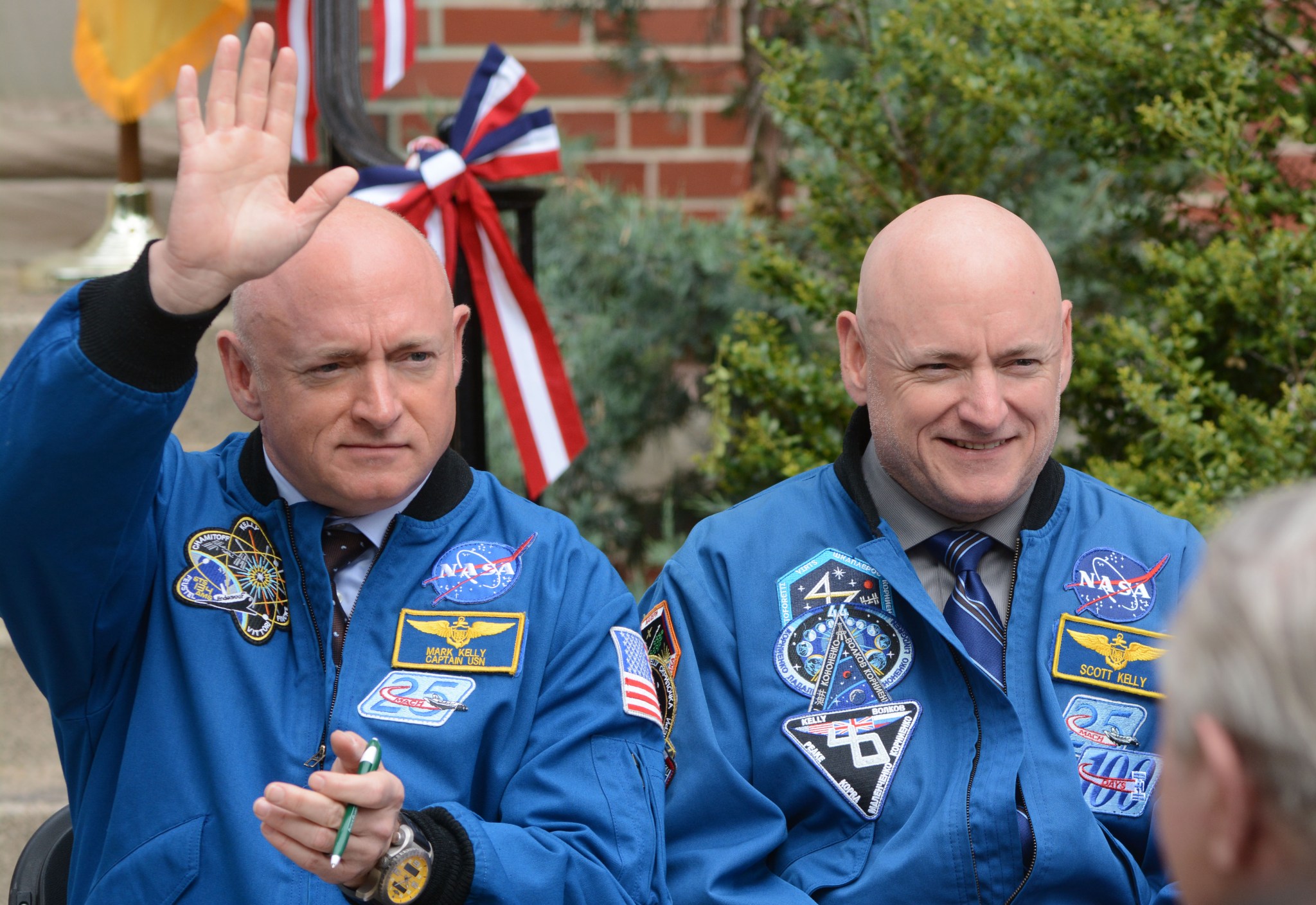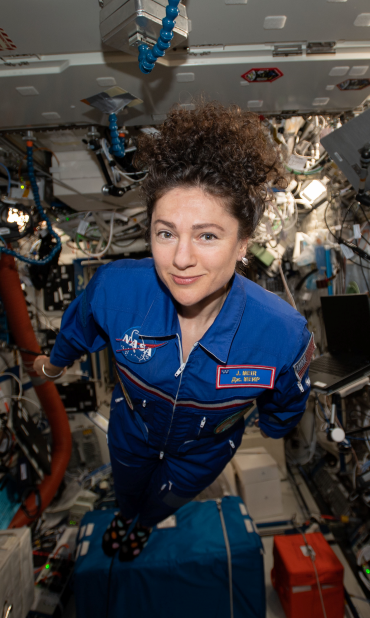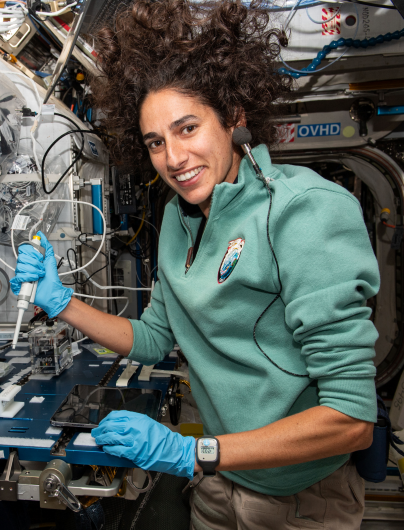NASA’s trailblazing Twins Study moved into the final stages of integrated research with the release of a combined summary paper published in the peer-reviewed journal, Science.
The landmark Twins Study brought ten research teams from around the country together to observe what physiological, molecular and cognitive changes could happen to a human from exposure to spaceflight hazards. This was accomplished by comparing retired astronaut Scott Kelly while he was in space, to his identical twin brother, retired astronaut Mark Kelly, who remained on Earth.
The results of the Twins Study reveal some interesting, surprising and positively assuring data of how a single human body adapted to the extreme environment of space. NASA has gained some understanding of what happens to the body after six months aboard the International Space Station, but Scott Kelly’s one-year mission is a stepping-stone to longer expeditions such as missions to Mars, which could take three years for a round trip.
NASA recognizes the Twins Study as the first study of its kind to compare molecular profiles of identical twin astronauts, and a methodology to integrate research from the ten teams was established. Because identical twins share the same genetic makeup, twin studies provide a way for scientists to explore how our health is impacted by the environment around us, independent of the physical variations that naturally occur between most of us as individuals. Scott provided a test case to measure in space, and Mark provided a baseline test case to compare those measurements on Earth.
The results from the ten research teams are summarized below. This data may be used for decades to come, as NASA seeks to ensure the health and safety of astronauts conquering the challenges of space exploration.
Telomeres: The ends of each strand of DNA (also known as deoxyribonucleic acid; a nucleic acid in the cell’s chromosomes, containing the cell’s coded genetic instructions) have special features called telomeres. Telomeres protect our chromosomes, as plastic handles protect jump ropes. Telomere lengths tend to get shorter as we age; however, lifestyle factors, stresses and environmental exposures can also affect the rate at which this shortening occurs. One of the most striking discoveries from NASA’s Twins Study is that Scott experienced a change in telomere length dynamics during spaceflight and within days of landing. Results from this investigation may help to evaluate general health and identify potential long-term risks.
Immunome: Scott received three flu vaccines, each one year apart; first on Earth, second in space (the first time an astronaut was given a vaccine while in space), and third back on Earth. This study found that Scott’s body reacted appropriately to the vaccine. This is a significant finding because it allows NASA to have greater confidence that the immune system responds appropriately in space, should a vaccine ever be needed, during long-duration missions.
Gene Expression: Samples taken before, during and after Scott’s mission in space revealed some changes in gene expression. Mark also experienced normal-range changes in gene expression on Earth, but not the same changes as Scott. Changes Scott experienced may have been associated with his lengthy stay in space. Most of these changes (about 91.3%) reverted to baseline after he returned to Earth; however, a small subset persisted after six months. Some observed DNA damage is believed to be a result of radiation exposure. Gene expression data corroborated and supported other findings in the Twins Study, including the body’s response to DNA damage, telomere regulation, bone formation and immune system stress. These findings help demonstrate how a human body was able to adapt to the extreme environment of space and help researchers better understand how environmental stressors influence the activity of different genes, leading to a better understanding of physiological processes in space.
Cognition: With few exceptions, Scott’s cognitive performance (such as mental alertness, spatial orientation, recognition of emotions) remained largely unchanged during his time in space, and relative to Mark on the ground. This is important as it suggests that astronauts can maintain high levels of cognitive performance for longer durations in space. However, a more pronounced decrease in speed and accuracy was observed after he landed and persisted for six-months. The changes observed just after landing are possibly due to re-exposure and adjustment to Earth’s gravity, and the busy schedule that enveloped Scott after his mission.
Biochemical: Studying various elements in Scott found that his body mass decreased by seven percent during flight. This is likely due to increased exercise and controlled nutrition while on his mission, but he also consumed about 30% fewer calories than researchers anticipated. His bone breakdown and bone reformation cycle occurred at a faster rate during the first six months he was in space, but slowed down in the second half when his exercise volume was lower. His chemistry of blood and urine samples indicated that his folate status (vitamin B-9) was low before flight but went up during flight, likely due to better food choices from the space food system. Folate has many important functions in the body, including support of DNA synthesis. In fact, there is a correlation between Scott’s folate status and telomere dynamics. These data support the fact that nutrition plays an important role in all aspects of health in space and on Earth.
Microbiome: A highly diverse microbiome (bacteria in the gut) is generally associated with good health. Scott’s gut flora was found to be profoundly different during flight from preflight. This could be due to the food he consumed while on the space station (mainly freeze-dried or thermo-stabilized prepackaged food) although other space-specific environmental factors may have also contributed. When he landed back on Earth, Scott’s microbiome returned to preflight state. Observing how much Scott’s gut bacteria returned to normal was reassuring. Findings from this study may provide researchers with a better understanding of how to help improve overall health, such as adjusting astronauts’ diets to help beneficial bacteria thrive.
Epigenomics: This study looked at how the twins’ environments influenced changes in DNA methylation, which has a significant impact on many biochemical reactions in the body. Researchers found Scott experienced epigenetic changes inflight, but the degree of changes was no greater than Mark’s on Earth. Furthermore, most of Scott’s epigenetic changes took place during the second six-months of the mission and would not have been observed in a shorter mission. Scott’s white blood cells revealed genes, or regions of the genome, where DNA methylation was altered in flight but returned to baseline upon his return. These regions were different than those identified in Mark, helping researchers identify genes that appear most responsive to the space environment. These results open the door to epigenetic measurements of astronauts on long-duration space missions and may help determine whether spaceflight-associated changes are transient or long-lived. They could also help identify which preventative countermeasures might better protect astronauts’ health.
Metabolomics: The metabolomics study looked for signs of atherosclerosis (narrowing of the inside of an artery wall due to plaque buildup) which may be caused by inflammation and oxidative stress during spaceflight. By imaging the carotid artery using ultrasound and from sampling blood and urine, the researchers found indications of inflammation and carotid artery wall thickening in Scott during and immediately after his mission, but no such changes were observed in Mark. Whether this adaptation is reversible remains to be determined. Results from this study help researchers understand better the effects of long duration spaceflight on the cardiovascular system.
Proteomics: The proteomics team studied fluid shifts in the body, the structure of the eye, and proteins in urine to see if changes in protein pathways in response to fluid shifts might contribute to some astronauts’ vision problems. They found that a protein, AQP2, was elevated in Scott in space as compared to Mark on the ground. AQP2 regulates water reabsorption in the body and is a useful indicator of hydration or dehydration status. These results are helping to piece together the puzzle of vision problems during spaceflight.
Integrative Omics: Finally, the longitudinal integrated multi-omics analysis team examined all of the biomedical and molecular data collected from the other nine research teams to produce the single most comprehensive view of how the human body responds to spaceflight. Researchers found three strong indications of inflammation in Scott in space. Interestingly, some of these markers were elevated in Mark as well.
The Twins Study demonstrated the resilience and robustness of how a human body can adapt to a multitude of changes induced by the spaceflight environment. Researchers found that many of Scott’s responses observed returned to preflight levels by the study’s end. These included immune responses, epigenetic changes, gut bacteria, body weight, and serum metabolites. Some factors were affected only after landing. These include some indicators of inflammation and immune response. A few factors remained altered at the conclusion of the study. These included a small subset of changes in gene expression, telomere dynamics, DNA disruption, carotid artery thickening, ocular changes, and some cognitive functions.
Findings from the Twins Study may be used to develop new treatments and preventative measures for stress-related health risks on Earth. For example, telomere research may improve efforts to mitigate the effects of aging and disease. The proteomic research could have implications for research on traumatic brain injury. Research in astronauts could give new insights into how changes in the body are related to risk factors for diseases. These are just a few of many ways spaceflight research can help humankind.
NASA has a rigorous training process to prepare astronauts for their missions, a thoroughly planned lifestyle and work regimen while in space, and an excellent rehabilitation and reconditioning program for them when they return to Earth. Thanks to these measures and the astronauts who tenaciously accomplish them, the human body remains robust and resilient even after spending a year in space. Research from the landmark Twins Study may guide NASA’s Human Research Program studies for years to come, as NASA continues to prioritize the health and safety of astronauts on spaceflight missions, particularly long-duration missions on the International Space Station, and to the Moon, Mars, and worlds beyond.
For more information about the NASA Twins Study, click here.
_____
NASA’s Human Research Program, or HRP, pursues the best methods and technologies to support safe, productive human space travel. Through science conducted in laboratories, ground-based analogs, and the International Space Station, HRP scrutinizes how spaceflight affects human bodies and behaviors. Such research drives HRP’s quest to innovate ways that keep astronauts healthy and mission-ready as space travel expands to the Moon, Mars, and beyond.


































